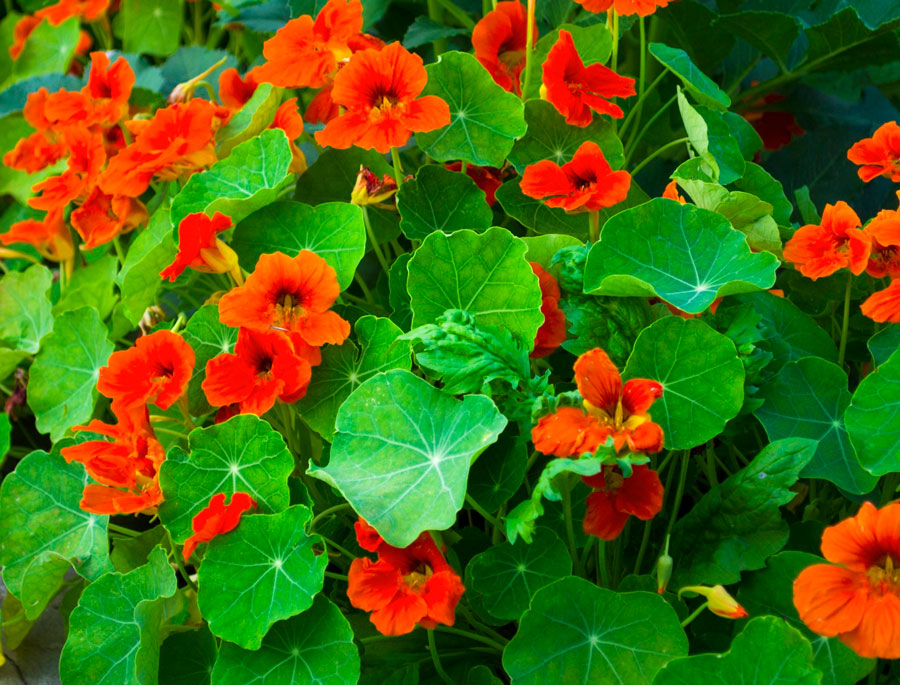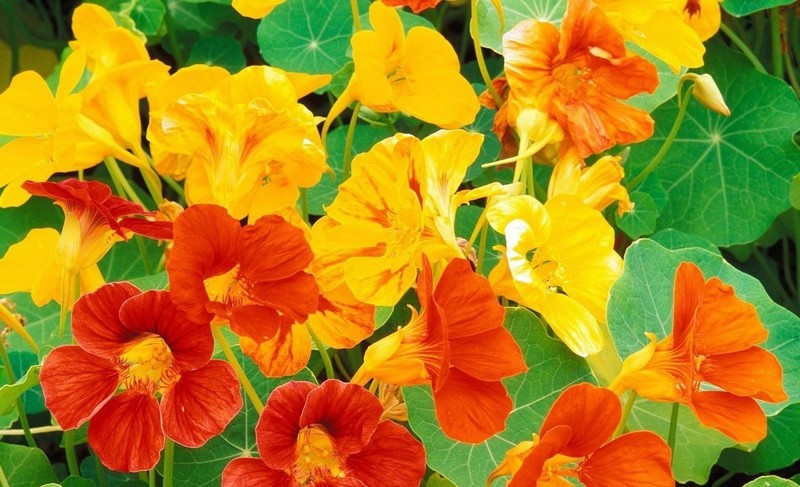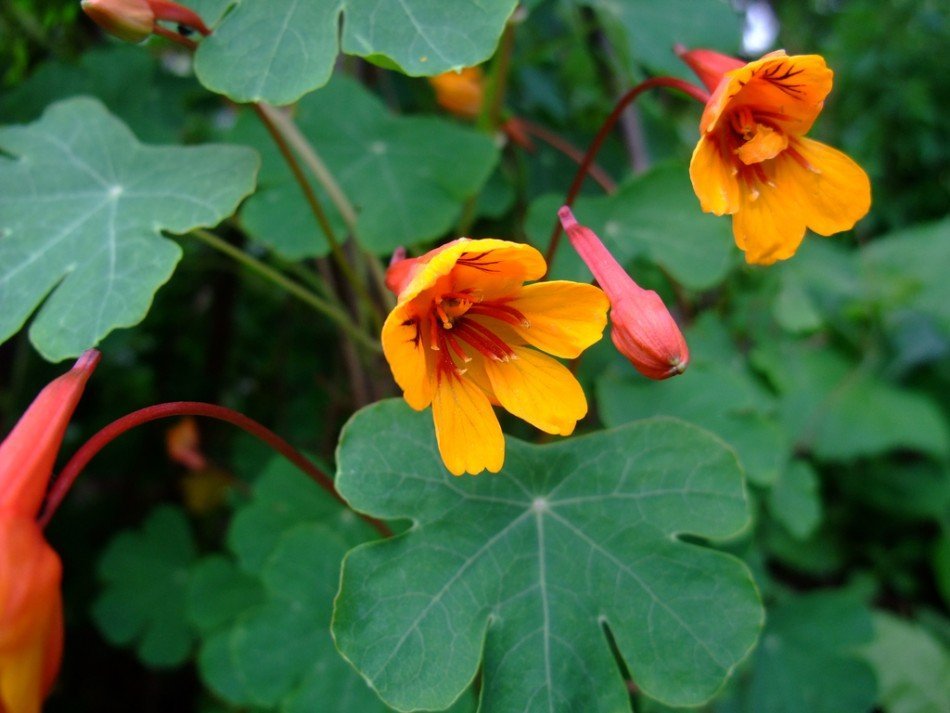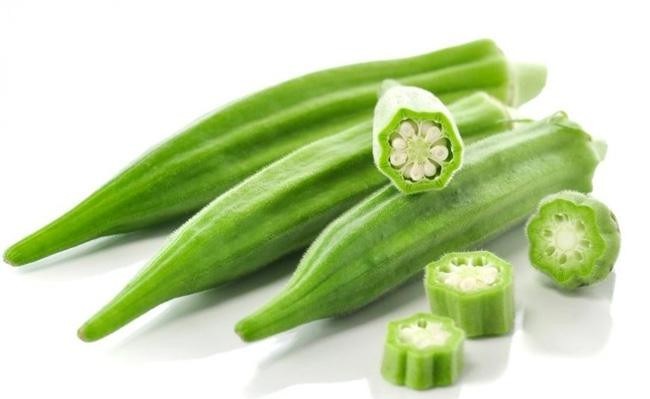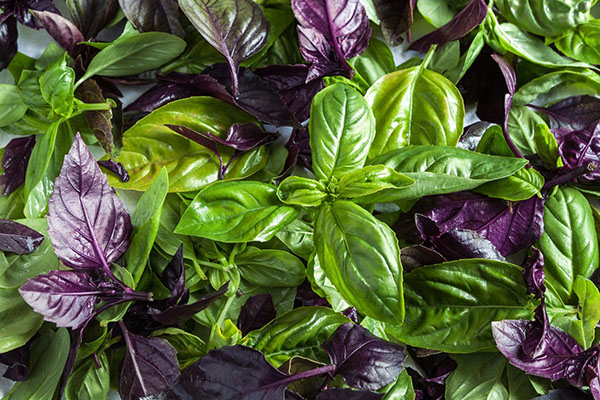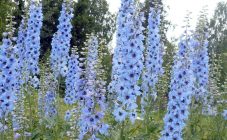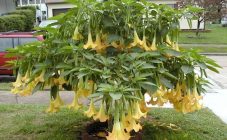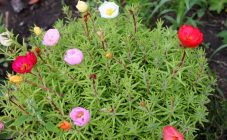Content:
Nasturtium (from Lat. Tropaeolum, capuchin) is a herbaceous liana-like plant of the Nasturtium family, with juicy bright green shoots. Differs in unpretentiousness when growing and versatility, i.e. blooms both on flower beds and on balconies, in hanging pots. For successful flowering, it is important to determine what color the nasturtium will have when growing from seeds, when to plant, how to care for and what fertilizing the plant needs.
Growing rules
Even a novice gardener can grow nasturtium in the garden. Abundant long-lasting bloom with beautiful flowers resembling a hood decorates even a small garden.
A wide selection of varieties allows you to choose a plant with fragrant, simple, semi-double and double flowers and a different structure of the leaf plate (lobed, whole-edged, thyroid, palmate).
For spectacular flowering nasturtium at growing at garden at open soil requires compliance rules cultivation:
- Sowing from seeds of only a proven quality manufacturer.
- Selection of a landing site, a sunny and draft-proof site.
- The choice of varieties and varieties of plants (bush, curly or ampelous).
- Preparing the soil for planting. Application of organic and mineral fertilizers.
- Competent care, timely watering.
- Additional measures in the form of mulching the soil, tying plants to stakes (trellis, twigs), pinching, etc.
At home, capuchin can be grown using both seeds and seedlings. Strict adherence to the recommendations will allow you to grow a beautiful, healthy, flowering plant.
Planting nasturtium in open ground
The best time to plant a capuchin is spring, when the threat of frost has passed, and the soil has warmed up to 10-12 ° C. The best time to plant seeds is mid-May.
The most optimal landing site is an open, well-lit area, protected from drafts and sudden gusts of wind. Can be planted along paths, fence.
Capuchin is an unpretentious flower. However, when grown on infertile loamy soil, the shoots stretch out, and the flowers become smaller. For intensive growth, abundant and lush flowering, a loose, fertile soil with sufficient moisture supply is required.
Before planting, they dig up the soil, remove all weeds, loosen the earth and dig holes. At the bottom of the hole, you can add wood ash, small sawdust, organic fertilizers (crushed pine needles, food waste, rotted manure) and spill well with hot water.
There should be a distance of at least 20-25 cm between the holes, and between the rows - 30-40 cm. The seeds laid out in the holes are covered with a 2 cm layer of fertile soil (you can use purchased universal soil, fertile black soil). Then you need to water the wells well with water from a watering can. If necessary, you can spread a layer of agrofibre, lutrasil, spandbond on top.
Before planting, the largest seeds must be soaked in a growth stimulator (Kornevin, Zircon).
On average, 10-14 days pass from the moment of sowing seeds in open ground until the first shoots appear, and 4-6 weeks before flowering. Flowering begins in July.
To accelerate the onset of flowering (in June), nasturtium can be planted with seedlings. But the plant has a poorly developed root system, when picking and planting in open ground, the seedlings may not take root.
For better rooting of seedlings, you can use special peat tablets, peat cups, paper cups without a bottom. This method of growing allows you to plant seedlings along with an earthy clod directly in a glass (tablet) and not injure the root system.
Sowing seeds for seedlings is carried out in early April. Seedlings are grown on a well-lit windowsill in direct sunlight. When 4 true leaves appear, the seedlings are planted in open ground.
Care after landing
For fast growth and intense flowering, plants need special care. is he consists at next:
- Regular watering as the earthen coma dries out. Lack of moisture, as well as its excess, is fraught with rotting of the root system and the death of nasturtium.
- Loosening the soil after each watering.
- Weeding of beds and row spacings.
- Mulching the soil to retain moisture and as an additional source of organic fertilizers. As mulch, you can use cut grass, straw, household waste (vegetable peel), sawdust, chopped spruce paws, etc.
- Top dressing with mineral fertilizers. During the period of intensive growth, before the onset of budding and flowering, it is necessary to apply phosphorus-potassium and nitrogen fertilizers to the soil, watering with a solution of copper sulfate.
- Preventive spraying with fungicidal and insecticidal solutions in pest control.
- Pruning dry ovaries, leaves, removing dry flowers.
- Long shoots can be pinched to make the plant more lush and compact.
- Curly varieties, if necessary, can be tied to a support (fence, trellis, stakes).
- As the root system develops, it is recommended to dig in the stem to strengthen the stem from breaking off and improve the supply of trace elements to the soil with an additional layer of soil.
Blooming nasturtium and proper cultivation and outdoor care allow you to enjoy vibrant flowers in summer.
Growing capuchin at home
Thanks to its decorative and medicinal properties, nasturtium grows and grows well on the balcony. For balcony gardening, capuchin can be grown by seed, seedling and vegetative division (cuttings).
The most affordable and easiest way is to sow seeds. Seeds are sown into peat tablets, peat pots. During the transplantation period, they are planted together with an earthen lump in a pots or container.
To nasturtium at pots or on balcony intensely developed and bloomed lush flowers, necessary follow row conditions:
- Seeds are sown in early March,
- The container with plants must be placed in a brightly lit place, but without direct sunlight on the capuchin leaves,
- Moderate watering, taking into account the needs of the flower,
- Feeding with phosphorus-potassium fertilizers 1 time in 2 weeks,
- Plucking long shoots, removing dried flowers promotes the formation of new buds.
Unpretentious nasturtium grows beautifully, like ordinary home flowers, and pleases with its flowering at home on the balcony or in hanging pots. Compliance with the rules of caring for home nasturtium promotes high-quality stem growth, the formation of buds and the flowering of beautiful double (semi-double) flowers.
Tips & Tricks
If you sow and breed nasturtium from seeds of your own collection, this does not guarantee high germination, and there is also a high risk of losing varietal characteristics and color palette.
Despite the high resistance to diseases and pests, plants in the open field can be affected by aphids, Colorado potato beetle, whitefly. Treatment with insecticidal preparations (Aktellik, Aktara, Fitoverm) or planting marigold bushes (marigolds) in the neighborhood will help to solve this problem.
With waterlogging in the soil, the formation of fungal diseases, spotted rust is possible. Spraying with fungicidal preparations (Baktofit, Vectra, Mikosan, Topaz) will help to save the plants.
Nasturtium is an unpretentious plant suitable for landscaping balconies, garden paths, fences. With proper and proper care, breeding is not difficult, and the nasturtium forms large buds, a lush leafy stem. The main condition is to plant a quality seed from a trusted manufacturer.
